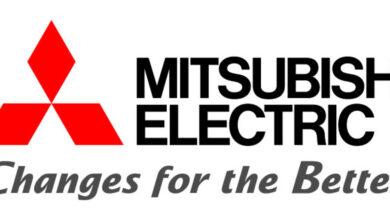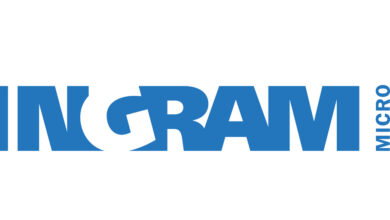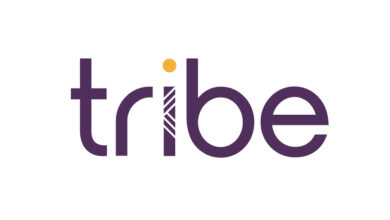Midwest Holding Inc. Reports First Quarter 2021 Results

LINCOLN, Neb.–(BUSINESS WIRE)–Midwest Holding Inc. (“Midwest”) (NASDAQ: “MDWT”), today announced financial results for its first quarter ended March 31, 2021.
First Quarter 2021 Highlights
- Annuity direct written premiums under statutory accounting principles grew 159% to $123.7 million in the first quarter of 2021, compared to $47.8 million in the first quarter of 2020
- Non-GAAP management revenue grew 126% to $6.4 million in the first quarter of 2021, compared to $2.8 million in the first quarter of 2020
- Non-GAAP management operating income (loss) available to common shareholders was a loss of $0.4 million in the first quarter of 2021, compared to income of $0.5 million in the first quarter of 2020
- GAAP revenue was negative $0.6 million in the first quarter of 2021, compared to $24.4 million in the first quarter of 2020
- GAAP net (loss) income was a net loss of $1.6 million in the first quarter of 2021, compared to income of $21.5 million in the first quarter of 2020
From Co-Chief Executive Officer A. Michael Salem
I am pleased to report on the solid progress we are making at Midwest. We continue to execute on our business plan and remain uniquely positioned to capitalize on the life and annuity supply chain.
The opportunity in our space has been established. Our business model has been validated by the industry. Midwest was built for this opportunity, from the ground up, to manufacture and distribute individual life and annuity products on behalf of third-party asset managers and investors.
Our goal is to build a transformational company capable of generating significant long-term earnings power. To do that, we must build an outstanding infrastructure – driven by investment in technology, distribution, asset management and operations – and we must manage our capital and our growth.
On these fronts Midwest is executing successfully:
- We have significantly expanded our distribution capabilities for our reinsurance products – positioning us for scalable access to capital in the foreseeable future
- We have built the beginnings of a solid asset management platform – attracting top talent such as 1505 CEO Eric Del Monaco, Head Trader Elliot Sperber and Head of Credit Brad Schneider to lead our efforts
- And we are building a leading technology and operations platform – not only allowing us to efficiently scale, but also providing us a very important third-party revenue opportunity
Q1 2021 Key Performance Indicators and Non-GAAP Financial Measures
Annuity Premiums
For the first quarter of 2021, annuity direct written premiums (statutory) grew 159% to $123.7 million, compared to $47.8 million in the first quarter of 2020. Ceded premiums for the first quarter of 2021, grew 84% to $47.5 million, compared to $25.7 million in the first quarter of 2020.
Management Revenue*
For the first quarter, management revenue (a non-GAAP measure) was $6.4 million ($10.0 million a management earnings power basis), an increase of 126% (274% on a management earnings power basis) compared to $2.8 million ($2.7 million on a management earnings power basis) in the first quarter of 2020. The components of management revenue in the first quarter of 2021 include:
- $2.9 million ($5.4 million on a management earnings power basis) of net revenue on reinsurance, primarily ceding commissions
- $2.9 million ($4.0 million on a management earnings power basis) of investment income, net of expenses
- $0.4 million service fee revenue, net of expenses
- $0.2 million of other revenue
* Non-GAAP: See discussion below for a reconciliation to GAAP.
Management Operating Income (Loss) Available to Common Shareholders*
For the first quarter of 2021, management operating income (loss) available to common shareholders decreased to a $0.4 million loss ($3.1 million income on a management earnings power basis), compared to $0.5 million of income ($0.6 million on a management earnings power basis) in the first quarter of 2020.
Management operating income (loss) available to common shareholders decreased year-over-year compared to the first quarter of 2020 due to timing of reinsurance transactions as well as general and administrative expenses attributable to increased investment in the business. Also, investment income was under expectations because of excess cash balances.
* Non-GAAP: See discussion below for a reconciliation to GAAP.
General & Administrative Expenses
For the first quarter of 2021, general and administrative or “G&A” expenses totaled $5.3 million compared to $2.1 million in the first quarter of 2020. G&A expenses include salaries, benefits and other operating expenses, while excluding $0.3 million of non-cash stock-based compensation and negative $4.1 million of non-cash mark-to-market of our derivative option allowance. Management views approximately 15% of G&A this quarter to be directly related to activities connected to investment in the future growth of the business.
Explanation of Non-GAAP Financial Measures
We discuss below certain non-GAAP financial measures that our management uses in conjunction with GAAP financial measures as an integral part of managing our business and to, among other things:
- monitor and evaluate the performance of our business operations and financial performance;
- facilitate internal comparisons of the historical operating performance of our business operations;
- review and assess the operating performance of our management team;
- analyze and evaluate financial and strategic planning decisions regarding future operations; and
- plan for and prepare future annual operating budgets and determine appropriate levels of operating investments.
Non-GAAP financial measures used by us may be calculated differently from, and therefore may not be comparable to, similarly titled measures used by other companies. These non-GAAP financial measures should be considered along with, but not as alternatives to, our operating performance measures as prescribed by GAAP.
Annuity Premiums
Annuity premiums, also referred to as sales or direct written premiums, do not correspond to revenues under GAAP, but are relevant metrics to understand our business performance. Under statutory accounting practices, or SAP, our annuity premiums received are treated as premium revenue. Our premium metrics include all sums paid into an individual annuity in a given period. We typically transfer all or a substantial portion of the premium and policy obligations to reinsurers. Ceded premium represents the premium we transfer to reinsurers in a given period. Retained premium represents the portion of premium received during a given period that was not ceded to reinsurers and will either be reinsured in a subsequent period or retained by us. We typically retain premiums prior to transferring them to reinsurers to facilitate block and other reinsurance transactions involving portfolios of annuity premiums.
Adjusted Revenue
Our adjusted revenue represents the revenue we receive and retain taking into account the reinsurance transactions we complete. We define adjusted revenue as revenue including the impact of reinsurance transactions completed during the relevant period and excluding the total return on the asset portfolios that are owned by reinsurers but held by us, which in the table below is the net realized (gains) losses on investments. We hold these assets primarily to reduce potential credit risk of the reinsurers. Under our agreements with reinsurers, the assets backing the reinsurance agreements are typically maintained by us as collateral but the assets and the total return on the asset portfolios are allocable by the reinsurers. We receive ceding commissions from reinsurers based on ceded premium in a given period, the products reinsured and the terms of the reinsurance agreements. The revenue we receive from ceding commissions is recognized and earned immediately under SAP upon the completion of a reinsurance transaction in which we have ceded premiums to reinsurers. There is no collectability risk as the commissions are paid to us in full in cash when the policies are written and there are no further expenses associated with the collected premiums. The adjustment for deferred coinsurance ceding commission is derived directly from our GAAP Consolidated Statements of Cash Flows in our Consolidated Financial Statements. Our management uses adjusted revenue as an internal measure of our underlying business performance and it provides useful insights into our results of operations.
Under GAAP, ceding commissions are deferred on our Consolidated Balance Sheets as a deferred gain on coinsurance transactions and are subsequently amortized through amortization of deferred gain on reinsurance on the Consolidated Statements of Comprehensive Loss over the period of the policy contracts.
Adjusted Net Income (Loss)
Adjusted net income (loss) is management’s evaluation of the impact of revenue we receive and retain taking into account the reinsurance transactions we complete. Under these provisions with third-party reinsurers, the assets backing the treaties are maintained by American Life as collateral and are carried on our Consolidated Balance Sheets, but the assets are owned by the third-party reinsurer; thus, the total return on the asset portfolio belongs to the third-party reinsurers. Under GAAP this is considered an embedded derivative but is not designated as a hedge. We make a Consolidated Statements of Comprehensive Loss adjustment for net realized gains or losses on investments related to the embedded derivative. The net realized gains or losses on investments related to the embedded derivative is included in GAAP net income or loss but is reversed dollar for dollar in the calculation of GAAP other comprehensive income (loss) through a reclassification adjustment for net realized gains or losses on investments. Management defines adjusted net income (loss) as net income (loss) including the impact of reinsurance transactions completed during the period and excluding the total return on the asset portfolios that are owned by reinsurers and held by us. These items have no direct expense and the tax effect of these adjustments is already included in our tax basis, which is similar to our Adjusted Net Income. Our management uses adjusted net income (loss) as an internal measure of our underlying business performance and because it provides useful insights into our results of operations.
Management Revenue
In addition to total revenue, we have consistently utilized management revenue as an economic measure to evaluate our financial performance. Management revenue is GAAP revenue while excluding the impact of items that fluctuate from quarter to quarter in a manner unrelated to core operations, which we believe are useful in analyzing operating trends. The most significant adjustments to arrive at management revenue eliminate the impact of net realized gains or losses on investments. Such adjustments include the elimination of net realized gains or losses on investments related to the fair value accounting for derivatives used to hedge the fixed indexed annuity (“FIA”) index credits and mark-to-market change in the FIA embedded derivative liability. The aforementioned adjustments are not economic in nature. We believe the combined presentation and evaluation of total revenue and adjusted revenue together with management revenue provides information that may enhance an investor’s understanding of our underlying operating results.
Management Earnings Power Metrics
We provide supplemental information herein that includes management earnings power metrics, which are non-GAAP measures. We believe these metrics are a valuable tool to us to determine potential earnings that we would achieve based upon certain key assumptions and performance targets. These assumptions include adjusting for the timing of our reinsurance transactions; furthermore, we assume that we meet our target of ceding 90% of our written premiums during a period and earn net revenue on reinsurance at a 4.00% rate on premiums ceded during a period. In addition, we assume that we meet our target of earning investment income, net of expenses during a period at a 4.75% return on assets (i.e. average retained total investments and cash during a period) on an annualized basis; this assumption adjusts for the timing of the deployment of our excess cash balances. These assumptions could prove to be materially incorrect, although we have made them part in good faith. We also assume that our investment in ongoing expansion and reinsurance of business of the Company is going to be approximately 15% of general and administrative expenses. This investment is to cover future costs that we believe will be necessary in order to continue our significant use of technology, product development and expenses involved in our reinsurance strategy. We further assume that our tax rate will be 21%. There can be no assurance that our assumptions will be correct. These metrics should not be considered GAAP measures in any manner whatsoever. Our GAAP results are set forth in our Consolidated Financial Statements.
Net Revenue on Reinsurance
We have consistently utilized net revenue on reinsurance, a component of management revenue, as an economic measure to evaluate our financial performance. Net revenue earned on reinsurance represents ceding commissions and other reinsurance-related fees paid to us in the period.
Management Expenses
In addition to total expenses, we have consistently utilized management expenses as an economic measure to evaluate our financial performance. Management expenses are total GAAP expenses adjusted to eliminate one-time, non-recurring expenses and the impact of items that fluctuate from quarter to quarter in a manner unrelated to core operations, which we believe are useful in analyzing operating trends. The most significant adjustments to arrive at management expenses include the use of management interest credited (as discussed below), the exclusion of stock-based compensation and the exclusion of the mark-to-market option allowance expense (included in other operating expenses) payable to reinsurers to cover their obligations to FIA policyholders. We believe the combined presentation and evaluation of total expenses together with management expenses provides information that may enhance an investor’s understanding of our underlying operating results.
Management Interest Credited
We have consistently utilized management interest credited, a component of management expenses, as an economic measure to evaluate our financial performance. GAAP interest credited contains significant technical considerations related to fair value accounting related to the mark-to-market change in the FIA embedded derivative liability and change in actuarial valuation of the FIA reserve, both of which are sensitive to changes in the market as well as changes in actuarial assumptions. Due to these technical considerations that are largely unhelpful to management and investors, we exclude the GAAP interest credited expense related to the FIA product and include the amortized cost of options we purchase to service our FIA policyholder obligations. The sum of GAAP interest credited related to our multi-year guaranteed annuity (“MYGA”) products and the amortized cost of options we purchase to service our FIA products is management interest credited.
Management Operating Income (Loss) Available to Common Stockholders
In addition to net income (loss), we have consistently utilized management operating income (loss) available to common stockholders as an economic measure to evaluate our financial performance. Management operating income (loss) available to common stockholders is management revenue (discussed above) net of management expenses (discussed above) and then tax-effected at 21% assumed tax rate.
SPECIAL CAUTIONARY NOTE REGARDING FORWARD-LOOKING STATEMENTS
Certain statements contained or incorporated by reference in this release constitute forward-looking statements. These statements are based on management’s expectations, estimates, projections and assumptions. In some cases, you can identify forward-looking statements by terminology including “could,” “may,” “will,” “should,” “expect,” “plan,” “anticipate,” “believe,” “estimate,” “predict,” “potential,” “intend,” or “continue,” the negative of these terms, or other comparable terminology used in connection with any discussion of future operating results or financial performance. These statements are only predictions and reflect our management’s good faith present expectation of future events and are subject to a number of important factors and uncertainties that could cause actual results to differ materially from those described in the forward-looking statements.
Factors that may cause our actual results to differ materially from those contemplated or projected, forecast, estimated or budgeted in such forward-looking statements include among others, the following possibilities:
- our business plan, particularly including our reinsurance strategy, may not prove to be successful;
- our reliance on third-party insurance marketing organizations to market and sell our annuity insurance products through a network of independent agents;
- adverse changes in our ratings obtained from independent rating agencies;
- failure to maintain adequate reinsurance;
- our inability to expand our insurance operations outside the 21 states and District of Columbia in which we are currently licensed;
- our annuity insurance products may not achieve significant market acceptance;
- we may continue to experience operating losses in the foreseeable future;
- the possible loss or retirement of one or more of our key executive personnel;
- intense competition, including the intensification of price competition, competitive pressures from established insurers with greater financial resources, the entry of new competitors, and the introduction of new products by new and existing competitors;
- adverse state and federal legislation or regulation, including decreases in rates, limitations on premium levels, increases in minimum capital and reserve requirements, benefit mandates and tax treatment of insurance products;
- fluctuations in interest rates causing a reduction of investment income or increase in interest expense and in the market value of interest-rate sensitive investment;
- failure to obtain new customers, retain existing customers, or reductions in policies in force by existing customers;
- higher service, administrative, or general expense due to the need for additional advertising, marketing, administrative or management information systems expenditures;
- changes in our liquidity due to changes in asset and liability matching;
- possible claims relating to sales practices for insurance products; and
- lawsuits in the ordinary course of business.
Earnings Teleconference Information
The Company will host a conference call to discuss financial and operating results for the first quarter 2021 on Friday, May 14, 2021, at 12:00 p.m. Eastern Time. The Company also plans to release its first quarter 2021 results on the investor relations section of its website at https://ir.midwestholding.com after the close of the financial markets on May 13, 2021.
CONFERENCE CALL DETAILS
To pre-register for this call, please go to the following link (you will receive your access details via email): https://www.incommglobalevents.com/registration/client/7573/midwest-holding-inc-q12021/
WEBCAST DETAILS (Audience)
Use this link to access the audience view of the webcast. https://event.on24.com/wcc/r/3082002/ACAF7ED754FD300A2FF579197E934571
A replay of the webcast will be made available after the call on the Investor Relations page of the Company’s website at https://ir.midwestholding.com
About Midwest
Midwest Holding Inc. is a rapidly growing, technology-enabled, services-oriented annuity platform. Midwest designs and develops in-demand annuity products that are distributed through independent distribution channels, to a large and growing demographic of U.S. retirees. Midwest originates, manages and transfers these annuities through reinsurance arrangements to asset managers and other third-party investors, who are actively seeking these financially attractive products. Midwest also provides the operational and regulatory infrastructure and expertise to enable asset managers and third-party investors to form, capitalize and manage their own reinsurance capital vehicles.
For more information, please visit www.midwestholding.com
| Supplemental Information – Management Financials (Unaudited) | ||||||||
| Three months ended March 31, | ||||||||
| 2021 | 2020 | |||||||
| Annuity Premiums (SAP) | ||||||||
| Annuity direct written premiums | $ | 123,653,931 |
| $ | 47,815,010 |
| ||
| Ceded premiums | 47,464,279 |
| 25,728,698 |
| ||||
| Three months ended March 31, | ||||||||
| 2021 | 2020 | |||||||
| Management Revenue | ||||||||
| Net revenue on reinsurance | $ | 2,858,782 |
| $ | 1,216,378 |
| ||
| Investment income, net of expenses | 2,887,363 |
| 1,240,978 |
| ||||
| Service fee revenue, net of expenses | 438,146 |
| 380,267 |
| ||||
| Other revenue | 248,969 |
| 9,777 |
| ||||
| Management revenue – total | 6,433,260 |
| 2,847,400 |
| ||||
| Management Expenses | ||||||||
| Salaries and benefits excluding stock-based compensation | 2,681,864 |
| 824,896 |
| ||||
| Other operating expenses excluding MTM option allowance | 2,569,227 |
| 1,313,179 |
| ||||
| General and administrative expenses (G&A) | 5,251,091 |
| 2,138,075 |
| ||||
| Management interest credited | 1,142,409 |
| 43,252 |
| ||||
| Amortization of deferred acquisition costs | 502,737 |
| 40,509 |
| ||||
| Expenses related to retained business | 1,645,146 |
| 83,761 |
| ||||
| Management expenses – total | 6,896,237 |
| 2,221,836 |
| ||||
| Management operating income before taxes | (462,977 | ) | 625,564 |
| ||||
| Effective tax benefit (expense) at 21% assumed tax rate | 97,225 |
| (131,368 | ) | ||||
| Management operating income (loss) available to common stockholders | $ | (365,752 | ) | $ | 494,196 |
| ||
| Management operating income (loss) available to common stockholders per common share | ||||||||
| Basic | $ | (0.10 | ) | $ | 0.24 |
| ||
| Diluted | $ | (0.10 | ) | $ | 0.24 |
| ||
| Weighted average shares outstanding – basic | 3,737,564 |
| 2,042,670 |
| ||||
| Weighted average shares outstanding – diluted | 4,010,238 |
| 2,065,045 |
| ||||
| Supplemental Information – Management Earnings Power Metrics (Unaudited) | ||||||||
| Three months ended March 31, | ||||||||
| 2021 | 2020 | |||||||
| Management Earnings Power Metrics | ||||||||
| Management revenue – total | $ | 6,433,260 |
| $ | 2,847,400 |
| ||
| Adjustments: | ||||||||
| Incremental net revenue on reinsurance at 4.00% on 90% written premiums to be ceded | 2,552,970 |
| 692,192 |
| ||||
| Incremental investment income, net of expenses at 4.75% ROA | 1,063,085 |
| (853,079 | ) | ||||
| Management earnings power – revenue | 10,049,315 |
| 2,686,513 |
| ||||
| Management operating income before taxes | $ | (462,977 | ) | $ | 625,564 |
| ||
| Adjustments: | ||||||||
| Incremental net revenue on reinsurance at 4.00% on 90% written premiums to be ceded | 2,552,970 |
| 692,192 |
| ||||
| Incremental investment income, net of expenses at 4.75% ROA | 1,063,085 |
| (853,079 | ) | ||||
| Management attribution of 15% of G&A to investment in future growth | 787,664 |
| 320,711 |
| ||||
| Management earnings power – operating income before taxes | 3,940,742 |
| 785,389 |
| ||||
| Effective tax benefit (expense) at 21% assumed tax rate | (827,556 | ) | (164,932 | ) | ||||
| Management earnings power – operating income (loss) available to common stockholders | $ | 3,113,186 |
| $ | 620,457 |
| ||
| Management earnings power – operating income (loss) available to common stockholders | ||||||||
| Basic | $ | 0.83 |
| $ | 0.30 |
| ||
| Diluted | $ | 0.78 |
| $ | 0.30 |
| ||
| Three months ended March 31, | ||||||||
| 2021 | 2020 | |||||||
| Management Earnings Power Metrics – Revenue | ||||||||
| Annuity direct written premiums | $ | 123,653,931 |
| $ | 47,815,010 |
| ||
| Ceded premiums | 47,464,279 |
| 25,728,698 |
| ||||
| Target: 90% of annuity direct written premiums to be ceded | $ | 111,288,538 | $ | 43,033,509 |
| |||
| Additional written premiums to be ceded | 63,824,259 |
| 17,304,811 |
| ||||
| Incremental net revenue on reinsurance at 4.00% on 90% written premiums to be ceded | 2,552,970 |
| 692,192 |
| ||||
| Net revenue on reinsurance | 2,858,782 |
| 1,216,378 |
| ||||
| Target: Net revenue on reinsurance at 4.00% on 90% of written premiums to be ceded | 5,411,752 |
| 1,908,570 |
| ||||
| Average retained total investments & cash during period | $ | 332,669,290 | $ | 32,665,178 |
| |||
| Target: Investment income, net of expenses at 4.75% ROA | 3,950,448 |
| 387,899 |
| ||||
| Incremental investment income, net of expenses at 4.75% ROA | 1,063,085 |
| (853,079 | ) | ||||
| Investment income, net of expenses | 2,887,363 |
| 1,240,978 |
| ||||
| Target: Investment income, net of expenses at 4.75% ROA | 3,950,448 |
| 387,899 |
| ||||
| Three months ended March 31, | ||||||||
| 2021 | 2020 | |||||||
| Management Attribution of 15% of G&A to Investment in Future Growth | ||||||||
| General and administrative expenses (G&A) | $ | 5,251,091 |
| $ | 2,138,075 |
| ||
| Management attribution of 15% of G&A to investment in future growth | 787,664 |
| 320,711 |
| ||||
Contacts
Investor contact: [email protected]
Media inquiries: [email protected]




